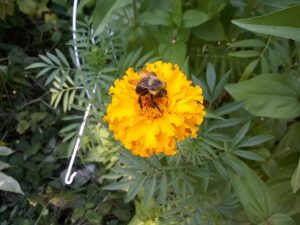Garden Blog 8/25/20
- Aug 25, 2020
- 2 min read
According to Marilyn, this is both an ugly time and a beautiful time in the butterfly garden. Ugly, because we’re in the midst of a drought, so the zinnias and other flowering plants often look terrible. But the good news is, they perk up again once they’re watered. It’s a beautiful time because even if the plants are dry or wilted, they’re blooming profusely and attracting many different kinds of pollinators.
The monarchs are in a transitional period where we’re seeing some of the generation that will migrate to Mexico, and some from the previous generation still hanging in there and laying their last round of eggs. If we see a monarch that is very large and also bright and fresh looking, there’s a good chance that it’s a migrator. If we see one that’s torn and faded, there’s a good chance that it’s a “parent” of the migrators and is reaching the end of its life. All are drawn to our flowers, and it’s nice to have a chance to see both at once.
The Helen’s flower that Marilyn has told us about previously is starting to bloom, and at this stage, it has funny angry faces.
Right under the Helen’s flower we find another native plant, called bottle gentian, blooming for the first time. The flowers don’t open any further. Bumblebees pry them open to get the nectar, pollinating them at the same time.
A painted lady butterfly shows one reason zinnias are such a great nectar flower: The yellow things are actually individual little flowers, so this painted lady sat and went around in a circle to get a lot of nectar all in one place.
Marilyn says she’s been watching these tall plants in the area where the zinnias are because she knew they were “something” but didn’t know what. Today she saw them blooming and realized that they’re marigolds. She remembered that there were some marigold seeds among some random ones someone gave her. She had heard these were great for pollinators but always thought, “Really? Huh” because previously had only seen the short kind you buy as plants in big flats, and they were… fine. It turns out that if you plant them from seeds, they grow to about 3 feet tall and apparently have a ton of nectar. This seems to be similar to the difference between a supermarket tomato and a homegrown one. Marigolds will be on Marilyn’s seed list from now on. The area of Mexico that the monarchs migrate to, both monarchs and marigolds have a deep connection to the Día de Muertos holiday — so, they’ll be a nice addition to our garden for that reason, too.














Comments